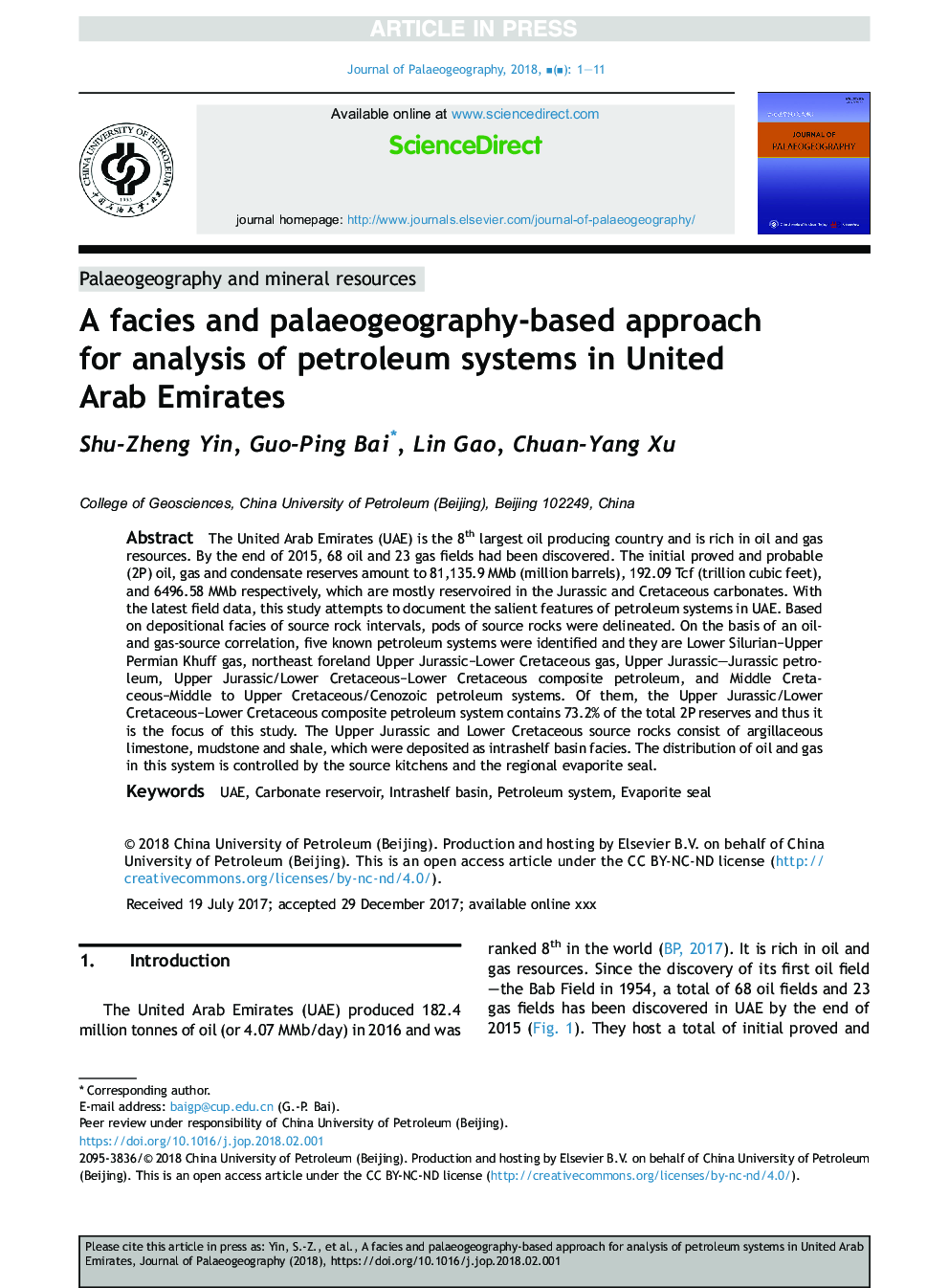| کد مقاله | کد نشریه | سال انتشار | مقاله انگلیسی | نسخه تمام متن |
|---|---|---|---|---|
| 8895318 | 1630313 | 2018 | 11 صفحه PDF | دانلود رایگان |
عنوان انگلیسی مقاله ISI
A facies and palaeogeography-based approach for analysis of petroleum systems in United Arab Emirates
ترجمه فارسی عنوان
یک رخساره و رویکرد مبتنی بر پالئوگرافی برای تجزیه و تحلیل سیستم های نفت در امارات متحده
دانلود مقاله + سفارش ترجمه
دانلود مقاله ISI انگلیسی
رایگان برای ایرانیان
موضوعات مرتبط
علوم زیستی و بیوفناوری
علوم کشاورزی و بیولوژیک
دانش خاک شناسی
چکیده انگلیسی
The United Arab Emirates (UAE) is the 8th largest oil producing country and is rich in oil and gas resources. By the end of 2015, 68 oil and 23 gas fields had been discovered. The initial proved and probable (2P) oil, gas and condensate reserves amount to 81,135.9Â MMb (million barrels), 192.09 Tcf (trillion cubic feet), and 6496.58Â MMb respectively, which are mostly reservoired in the Jurassic and Cretaceous carbonates. With the latest field data, this study attempts to document the salient features of petroleum systems in UAE. Based on depositional facies of source rock intervals, pods of source rocks were delineated. On the basis of an oil- and gas-source correlation, five known petroleum systems were identified and they are Lower SilurianâUpper Permian Khuff gas, northeast foreland Upper JurassicâLower Cretaceous gas, Upper Jurassic-Jurassic petroleum, Upper Jurassic/Lower CretaceousâLower Cretaceous composite petroleum, and Middle CretaceousâMiddle to Upper Cretaceous/Cenozoic petroleum systems. Of them, the Upper Jurassic/Lower CretaceousâLower Cretaceous composite petroleum system contains 73.2% of the total 2P reserves and thus it is the focus of this study. The Upper Jurassic and Lower Cretaceous source rocks consist of argillaceous limestone, mudstone and shale, which were deposited as intrashelf basin facies. The distribution of oil and gas in this system is controlled by the source kitchens and the regional evaporite seal.
ناشر
Database: Elsevier - ScienceDirect (ساینس دایرکت)
Journal: Journal of Palaeogeography - Volume 7, Issue 2, April 2018, Pages 168-178
Journal: Journal of Palaeogeography - Volume 7, Issue 2, April 2018, Pages 168-178
نویسندگان
Shu-Zheng Yin, Guo-Ping Bai, Lin Gao, Chuan-Yang Xu,
